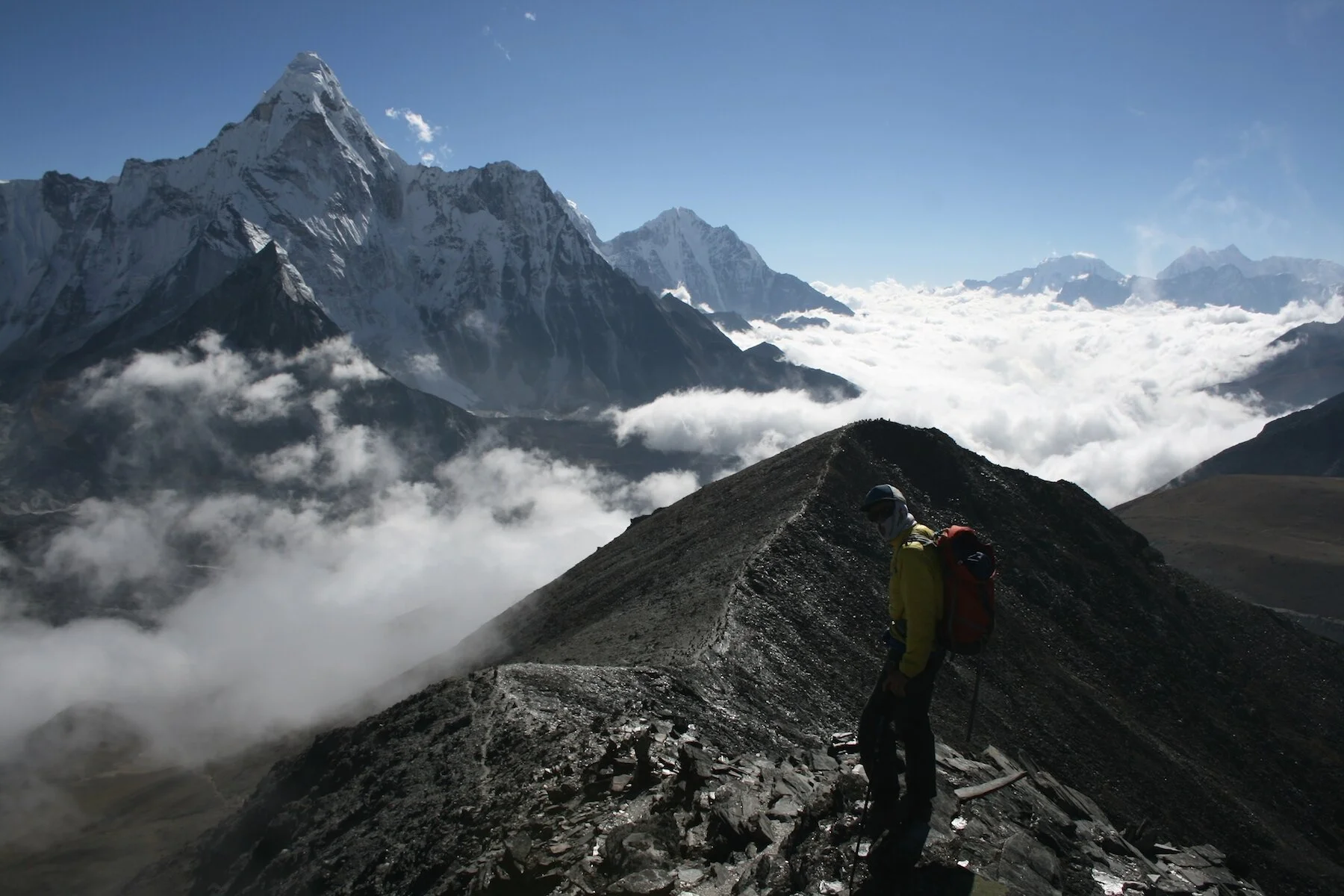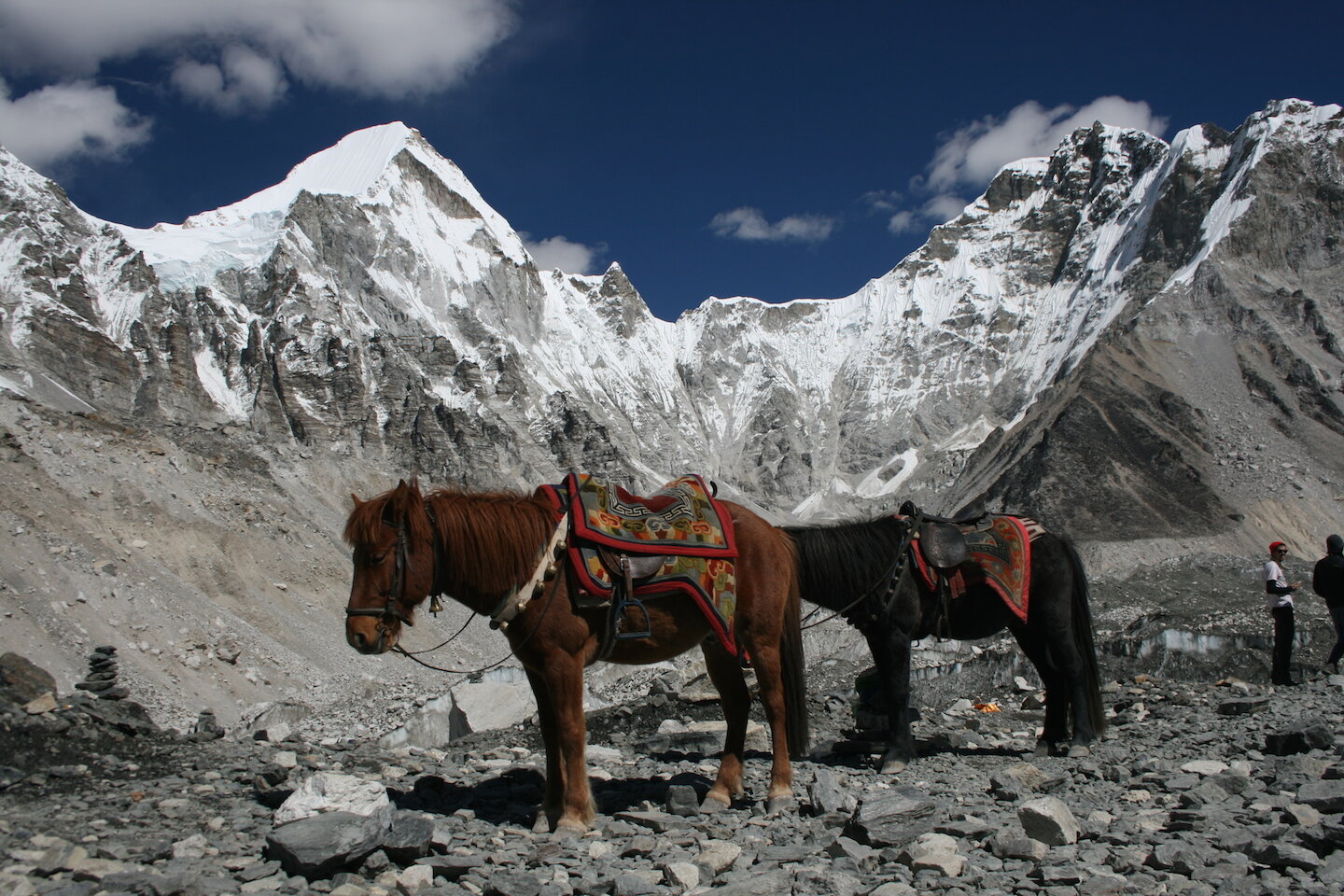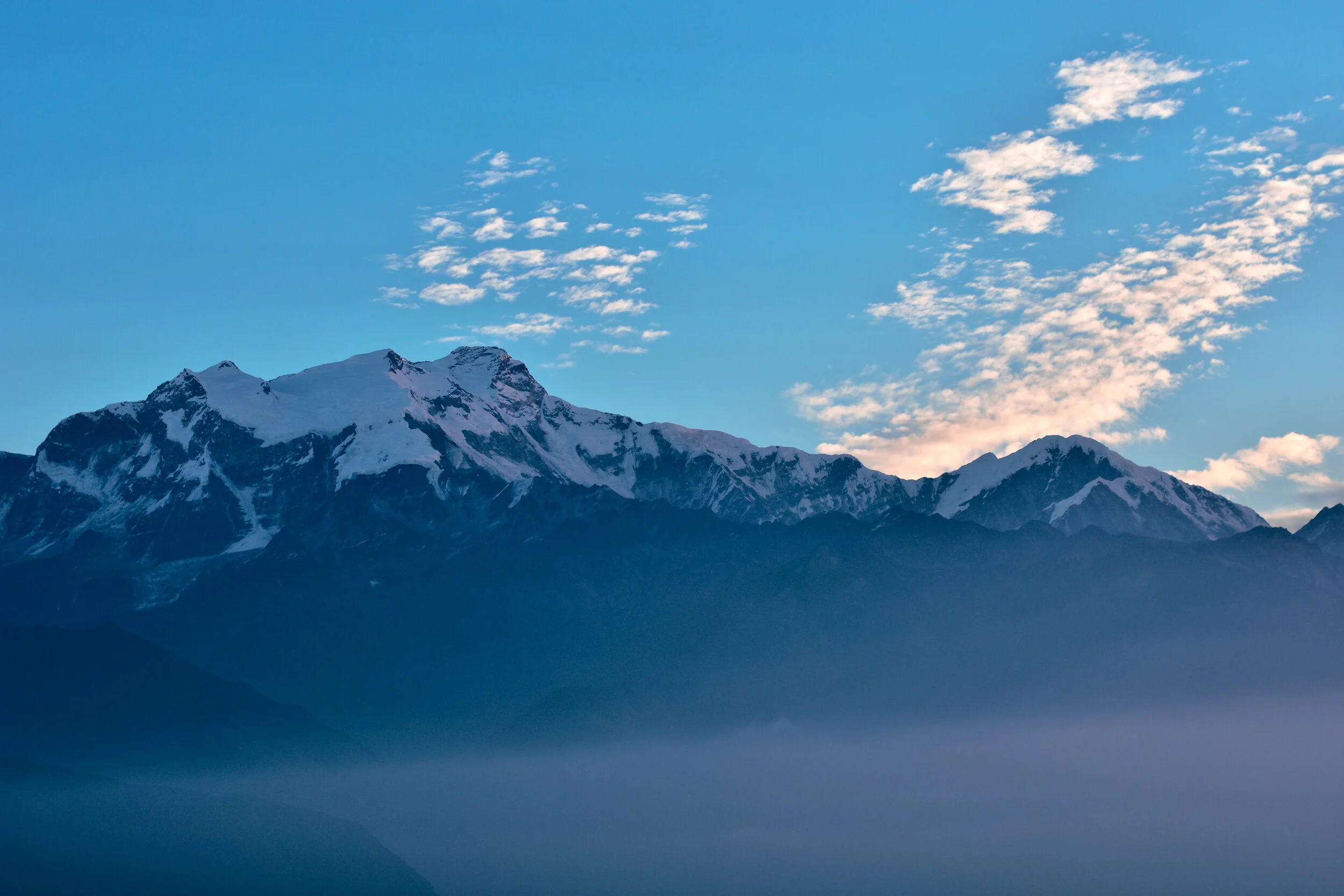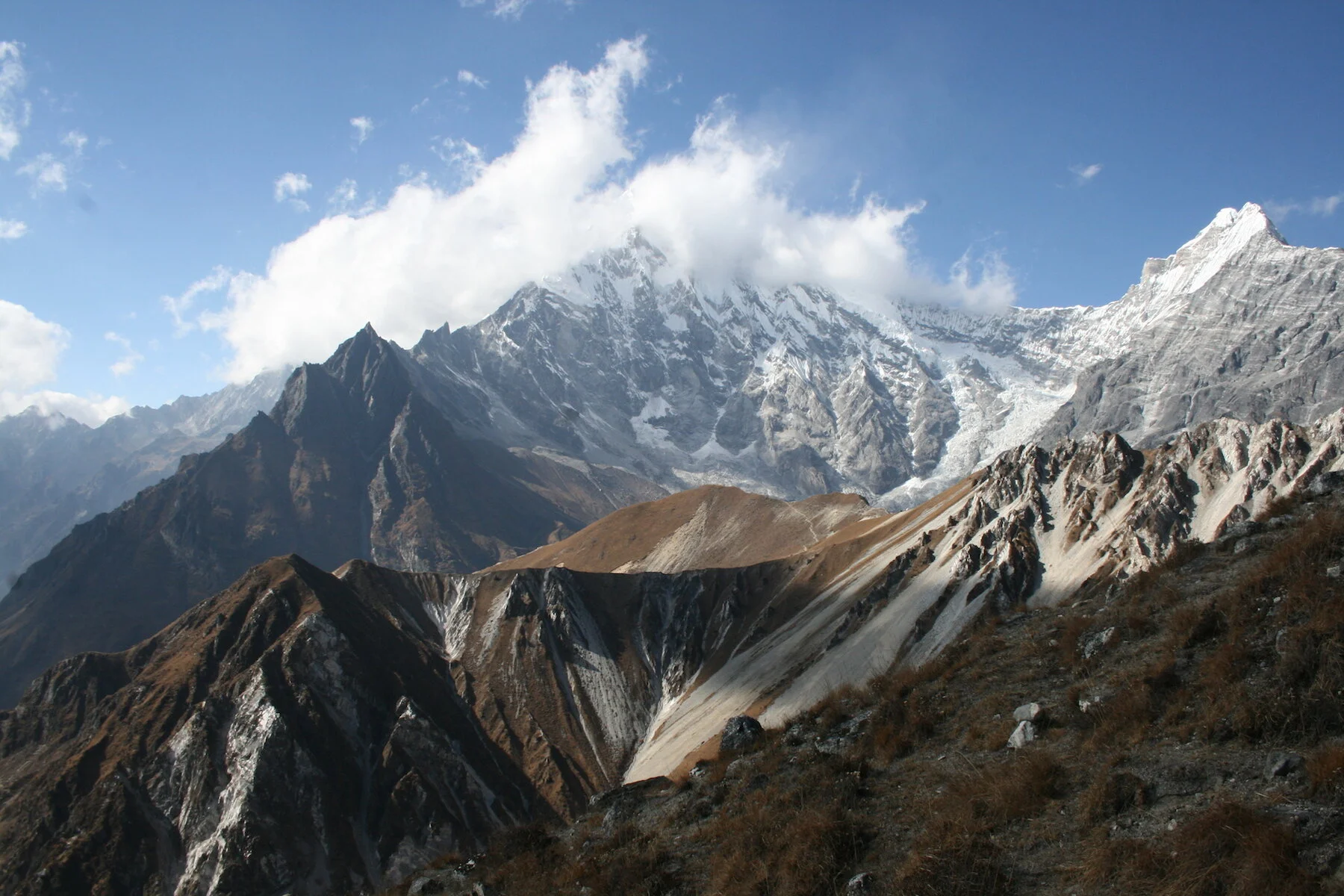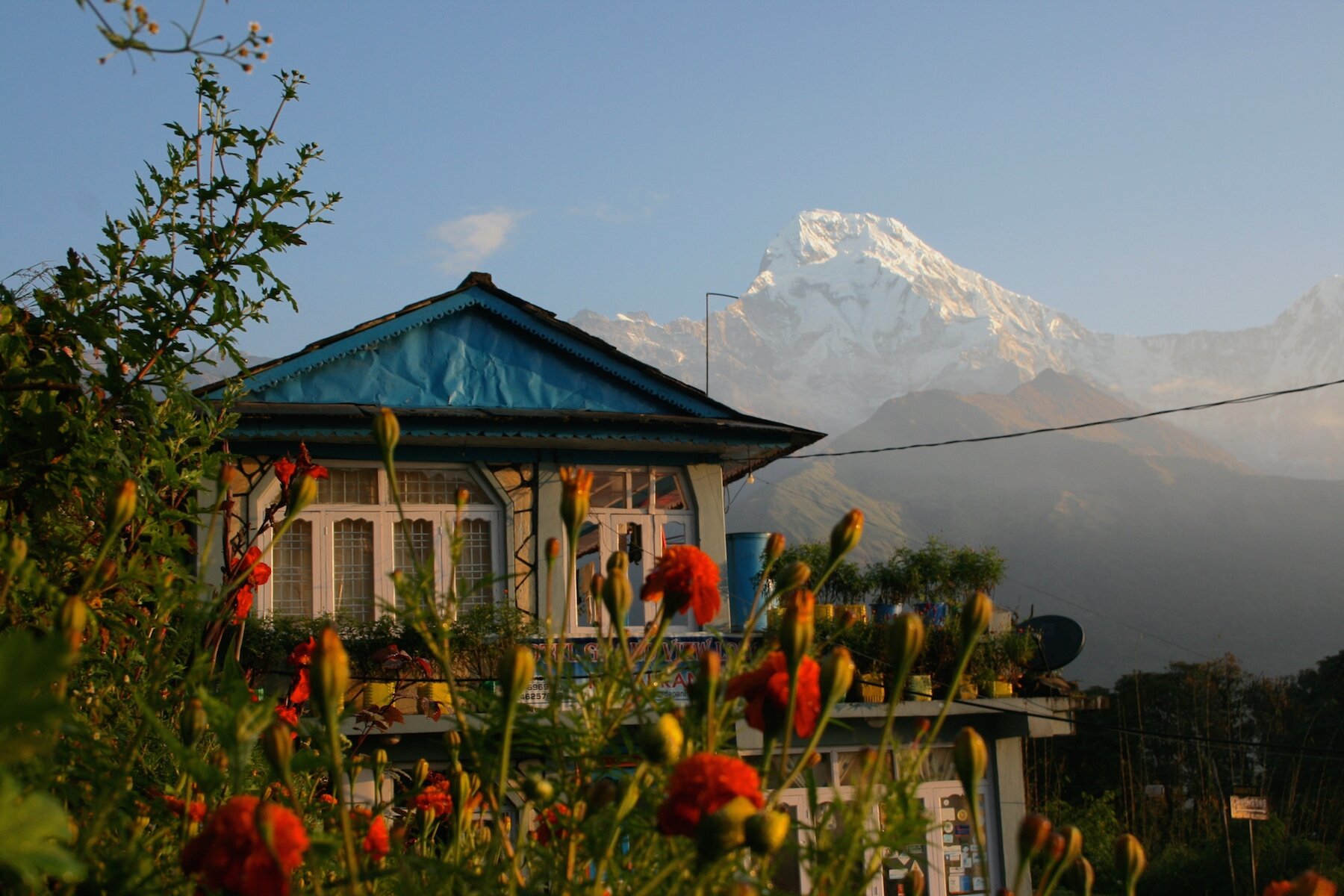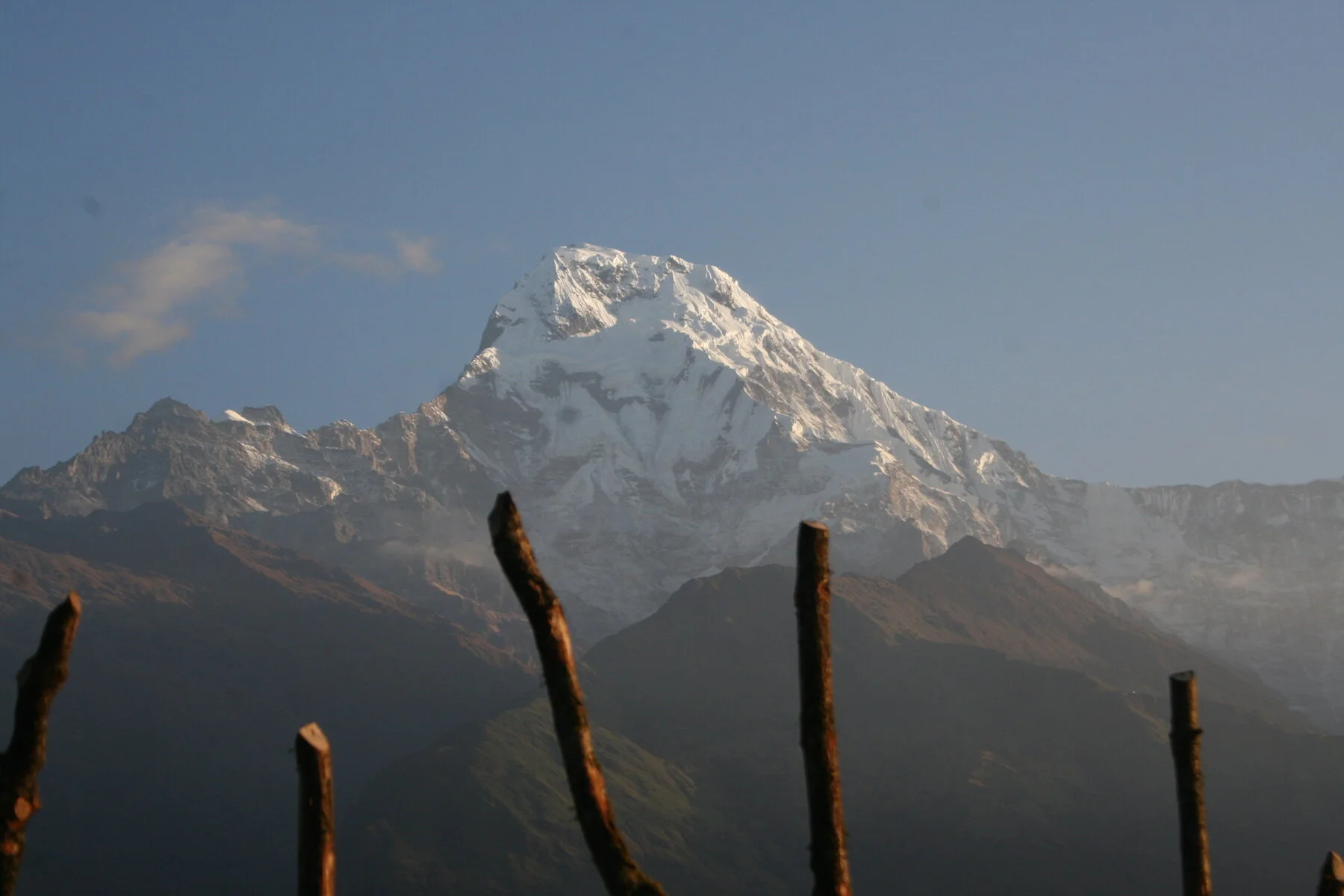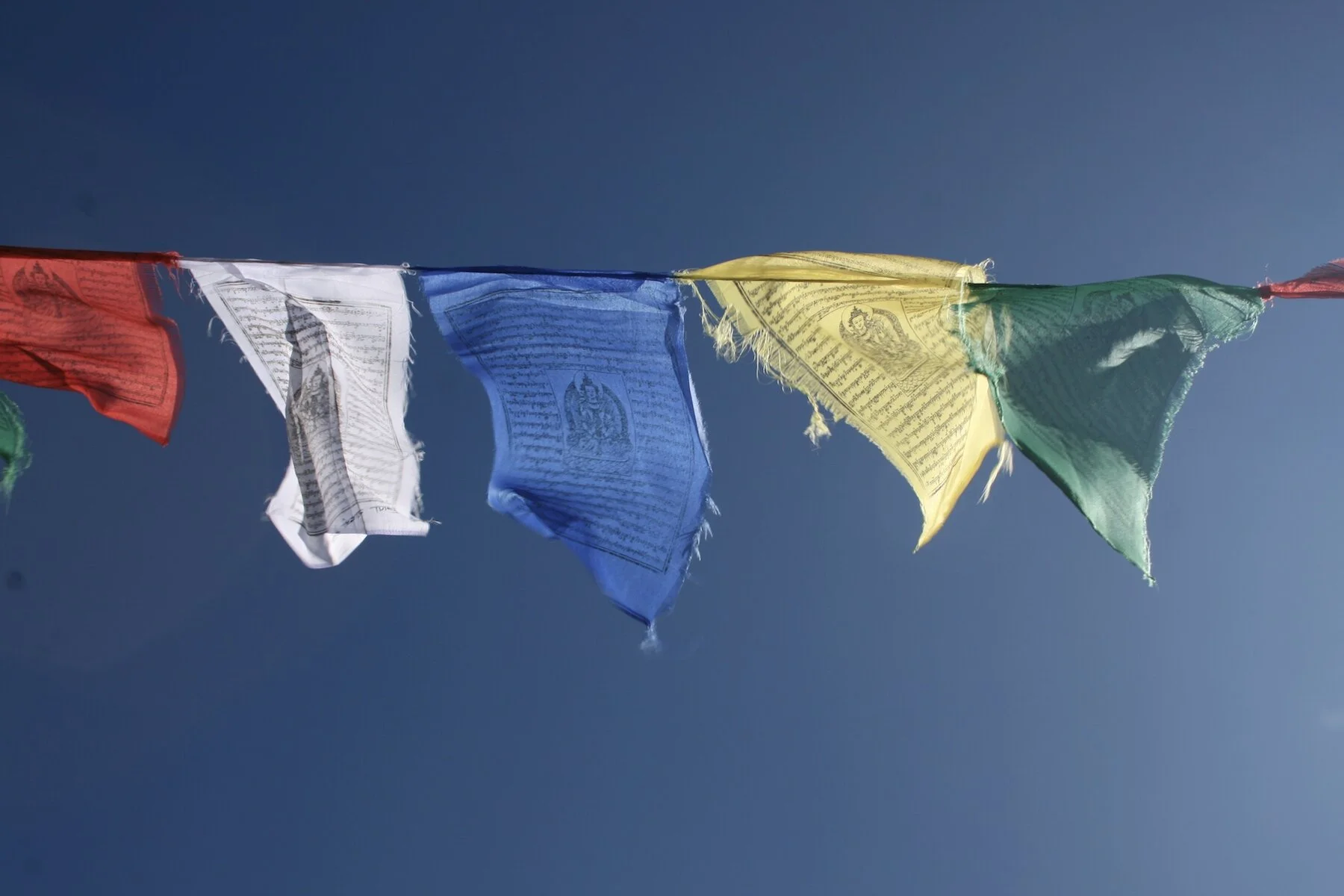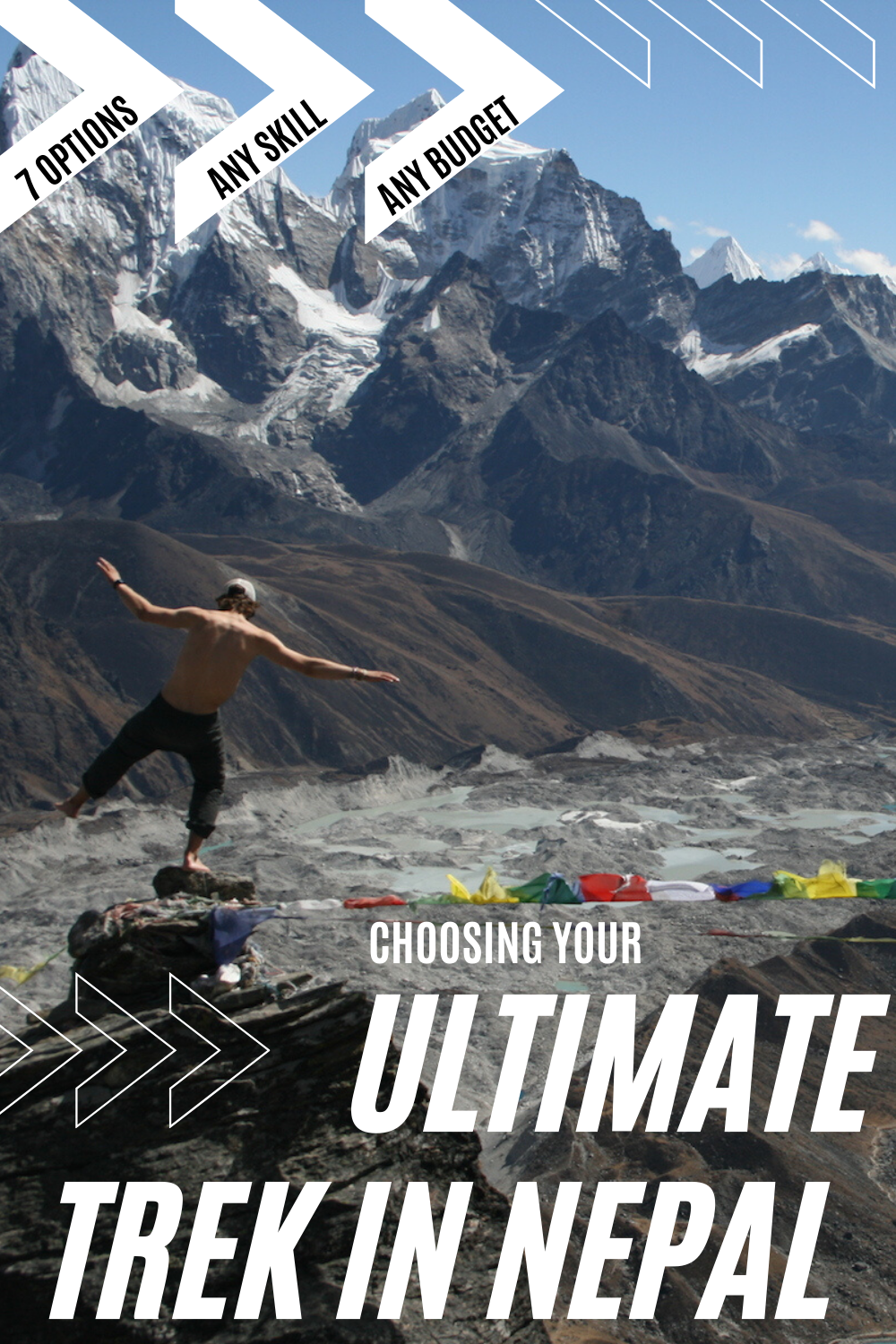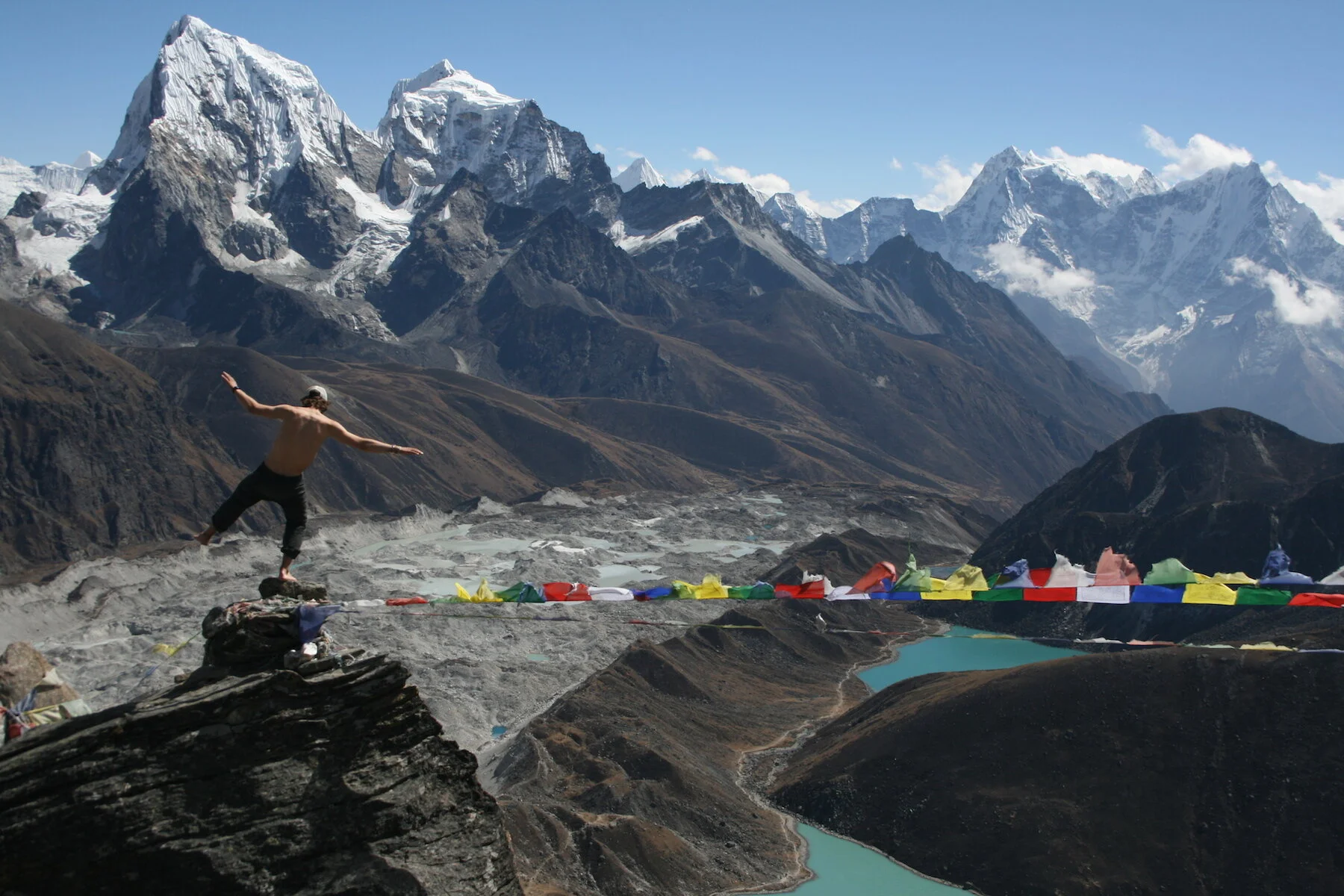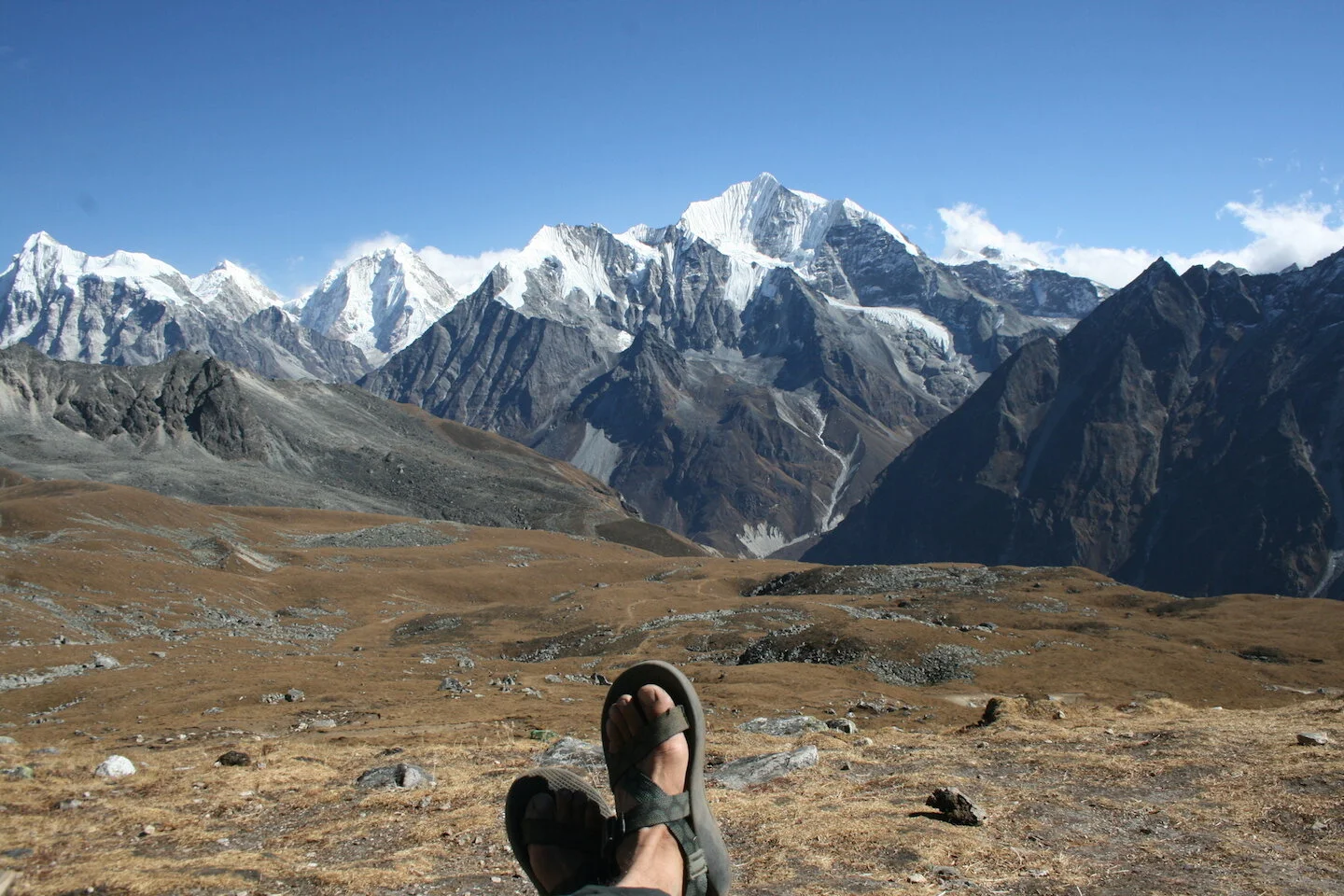Choosing Your Ultimate Trek in Nepal
Dreaming of Nepal?
So are we. And we’ve been there - twice now.
Nepal is a bucket-list destination for hiking. The Himalayas, which stretch across India, China, Tibet, Bhutan, and Nepal are spectacular. But Nepal has the easiest access to them. We won’t lie, that comes with a lot of people. For us, it was worth it (plus tbh we couldn’t afford the visa for Bhutan, Tibet or China). And we do love Nepal’s bustling, beating heart.
That being said - you’ve got to play it smart. The country is brimming with trekking adventures and each one isn’t the best choice for every traveler. They serve different purposes, come with unique expenses, and all offer spectacular views.
Here’s a rundown of 7 of the best treks in Nepal and how to choose which one is right for you. We’re talking about overnight adventures here - look elsewhere for day hikes.
Three Passes
This was one of the hikes we chose to do and we highly recommend it. If you want to do one trek in the country, this one probably offers the best bang for your buck. It’s basically a souped up version of the famous Everest Basecamp trek (which we’ll talk about in a minute!). You can route yourself to go past basecamp on the way (and all its tourists), but the highlight is three spectacular passes: Kongma La, Cho La, and Renjo La plus the opportunity to see the Gokyo Lakes and tack on a variety of trekking peaks.
Location
Sagarmatha National Park in northeastern Nepal. The trail takes you past Mount Everest and several other spectacular mountains.
Most people start from Lukla, which is accessible via flights from Kathmandu. It’s also possible to take an all-day bus to the town of Jiri or Salleri or Paplhu, which will add time on to your trek, but save you money. It also gives you the chance to experience the jungly terrain of lower elevations and meet lots of kind locals.
Time + Distance
Anywhere between 13 and 25 days and 160+ km depending on how many side trips you add and where you start. You can’t really speed this timeframe up. Significant changes in altitude can be dangerous if undertaken too quickly.
Pros
Mt. Everest (!!!)
Less tourists than the main Everest Basecamp trail
Gorgeous mountain views for much of the trip
Possible to fly or bus
Easy to add cool side trips
Ability to stay in teahouses with beds and food or to camp
Not too difficult for someone with hiking fitness and experience
No guide required (unless you feel you need one)
Cheap permits on arrival (+/- $50)
Cons
Still lots of tourists
Takes a full day to reach Salleri on a very scary bus from Kathmandu
If you fly, it will be expensive and likely delayed
The three passes are more challenging than EBC and not suitable for beginners
If you like things cushy (wifi, hot showers, plentiful food, a guide) it can get expensive
High altitude trekking is challenging and can be dangerous
Choose this hike if…
You have enough time and want to see Mt. Everest along with some of the best mountain scenery in the country, all on good trails and without the need for a guide. Quite possibly the ultimate trek in Nepal if you’re up for adventure.
Get more inspiration for some awesome trekking on instagram
Everest Base Camp
This trek is probably the most popular multi-day trek in Nepal. The trail offers fabulous views, a well-maintained track, and great infrastructure. It’s also packed with tourists; there’s no way around it. It can be done much more quickly and easily than the Three Passes trek. As its name suggests, it’ll get you to Everest Basecamp, understandably a bucket list destination for many. However, you’ll have to walk the whole track twice (there and back) unless you cross a high pass into Gokyo valley and return that way. This adds beauty, time, and difficulty.
Location
Just like the Three Passes trek, this one is located in Sagarmatha National Park in northeastern Nepal. In fact, the treks share several days on the same track.
Most people start from Lukla, which is accessible via flights from Kathmandu. It’s also possible to take an all-day bus to the town of Jiri or Salleri or Paplhu, which will add a few days on to your trek, but save you money. It’s a great way to meet friendly locals and see how much altitude affects the scenery.
Time + Distance:
The classic Everest Basecamp trek is 130 km. It will add slightly more distance if you want include the Gokyo Valley and significantly more distance if you want to start in Jiri or Salleri. The trek should not be undertaken in less than 10 days in order to safely acclimatize to the altitude. You could spend nearly a month in the region depending on how many side trips you want to add.
Pros
Mt. Everest (!!!) and surrounding mountains are beautiful
Possible to fly or bus
Fastest way to reach basecamp without taking a helicopter
Ability to stay in teahouses with beds and food
Possible for anyone in good fitness, even without much hiking experience
No guide required (unless you feel you need one)
Cheap permits on arrival (+/- $50)
Cons
Loads of tourists and often not a ‘wilderness’ experience
There-and-back trek (you walk the same track twice) unless you cross a high pass into the adjacent Gokyo valley
Possible to camp, buy may be difficult in highly-populated areas
Takes a full day to reach Salleri on a very scary bus from Kathmandu
If you fly, it will be pricy and likely delayed
If you like things cushy (wifi, hot showers, plentiful food, a guide) it can get expensive
High altitude trekking is challenging and can be dangerous
Choose this hike if…
You are relatively new to trekking and you really want to see Mt. Everest.
Manaslu Circuit
This new kid on the block can’t be counted as a classic trek yet, but that’s part of the appeal. The Manaslu Circuit is becoming an increasing popular alternative to some older and more crowded treks. That being said, you won’t be alone: plenty of people have hiked this two-week circuit and the top quality infrastructure proves it. You’ll get up close and personal with Manaslu, the worlds 8th highest mountain, with mountain views to rival any in Nepal.
Photo credit: Sanjeev Shakya via Unsplash
Location
This trek is closer to Kathmandu than most, in central Nepal about half way between the city and Pokhara. Most trekkers begin in Sotikhola and end in Dharapani, so not quite a complete circuit. Both can be reached by public bus or jeep, both of which will take you all day.
Pros
Less touristy alternative to classic treks
Close to Kathmandu
No need to fly domestically
Good infrastructure (trails, teahouses, etc)
Don’t have to walk the same trail twice
Lower altitude than some other treks
Cons
You technically need a guide for this circuit
It is getting more popular, so won’t be as remote as regions like Upper Mustang
If you like things cushy, it can start to get pricy
High altitude trekking can be dangerous
Time + Distance
This hike is approximately 130km and most trekkers take around 15 days.
Hike this trail if…
You don’t mind hiking with a guide and want to check out an alternative to the country’s classic treks with similar amenities and views.
Langtang
Stefan chose this trek as a short solo hike and was pleased to find the region welcoming and relatively unexplored. Much closer to Kathmandu than most other hikes, it still takes awhile to reach the trailhead via bus, but you’ll find much fewer tourists and cheaper prices once you get there. Unfortunately, the valley was ravaged in the 2015 earthquake, but the locals are rebuilding and greatly appreciate the support. Infrastructure and lodging are sufficient at this point for trekkers again. The only real drawback is a there-and-back nature to the hike. Overall, a lovely choice that’s not too challenging or long, but offers great mountain views and will show you a different side to Nepal than most tourists experience.
Location
Langtang Valley lies only about 80 km north of Kathmandu. However, it still takes almost a full day via bus to reach the town of Syabru Bensi, where the classic trek starts and finishes. It’s also possible to add a few days on to the trek and end in Melamchigaon or Timbu, where you can catch a shorter bus back to Kathmandu.
Pros
Lovely mountain views
Fewer tourists
Relatively short trek for those pressed for time
Closer physical location to Kathmandu
Friendlier locals (probably because there are fewer tourists)
Cheaper prices than the more popular treks
Possible to stay in teahouses with food and beds or to camp
More of a cultural experience than the more populated/seasonal regions
Relatively inexpensive permits (+/- $50)
No need for a guide unless desired
Cons
Requires permits that must be purchased in Kathmandu
Bus takes all day to Syabru Bensi
Not as many choices of guesthouses because of rebuilding efforts after the earthquake
No ‘famous’ mountains
There-and-back so you have to walk the same track twice
Time +Distance
60 km and about 4 days for the main trek. You can add a bit more time and distance with some side trips if you so desire.
Choose this trek if…
You only have a few days and want a less-touristy alternative to more famous treks. Also good for people that don’t want to fly and people that want a great experience with locals.
Poon Hill
This is the classic short-on-time trek in Nepal. Stefan did it with his father, who only had about a week in the country. After a quick flight to Pokhara, which runs much more regularly and safely than the flight to Lulka, it’s relatively easy to reach the trailhead. However, much like Everest Basecamp, there are tons of tourists. Actually, there are probably more tourists than Everest Basecamp. But a hike up to Poon Hill offers spectacular views of the Annapurna mastiff, and you don’t have to worry too much about high elevation or transportation.
Location
The closest major city is Pohkara, a flight or bus away from Kathmandu to the northwest. The trek itself actually starts in the town of Nayapul, which can be reached by a short bus ride. You can hire a jeep from smaller towns higher up if you want to shorten the trek even more.
Pros
Lovely views
Easy to access with a reliable flight or bus and an additional short bus ride
Good track suitable for most hikers - one of the easiest overnight options in the country
Short trek
Do not have to retrace your steps exactly
Lower elevation than most options in Nepal
Plentiful and good quality teahouses with food and beds
No need for a guide unless you want one
Relatively inexpensive permits (+/- $50)
Cons
Very touristy and not a wilderness experience at all
Need to buy permits ahead of time in Pokhara or Kathmandu
There-and-back trek (you walk the same track twice) if you want the shortest option
Lots of steps
Nearly impossible to camp in these highly populated areas
If you like things cushy (wifi, hot showers, plentiful food, a guide) it can get expensive
Time + Distance
The trek is around 50 km minimum and takes 3-6 days depending on where you start and finish and if you want to walk the same trail there and back.
Hike this trail if…
You want to see famous and impressive Annapurna, but you don’t have much time. Great for inexperienced hikers and those worried about higher altitude options.
Annapurna Circuit
This is one of Nepal’s classic long distance hikes. But, things are changing. There’s a new road being built through much of the track and tourists are reaching a new level of crazy. Still, it’s a life changing experience for many. The mountains are spectacular (especially Annapurna) and the trail accessible for most people in good fitness with a sense of adventure. This is a high altitude trek, though not quite as high as EBC or Three Passes.
Location
This trek is in the same region as Poon Hill to the northwest of Kathmandu near Pokhara and both will offer you nice views of Annapurna. The classic trek starts in Beshishari and ends in Nayapul. However, you can cut off varying amounts on either end and avoid some road walking.
Pros
Gorgeous views of Annapurna and the surrounding ranges
Arguably easier than similar treks in the Everest region
Relatively easy access to Pokhara and the trailhead
Elevation profile allows for more seemless acclimatization than some other treks
Varied landscapes from jungle to alpine
Great teahouse accommodation
It’s a circuit - so no hiking on the same track!
No need for a guide unless you want one
Relatively inexpensive permits (+/- $50)
Cons
Involves road-walking (probably the biggest con)
Increasing tourism can make the area feel overrun
High altitude trekking can be dangerous
Prices can start to add up if you like luxuries like showers and wifi
Can be difficult to camp in highly populated areas
Need to buy permits ahead of time in Pokhara or Kathmandu
Time + Distance
Minimum of 160km, much more if you want to add on side trips. The trek generally takes between 15 and 20 days.
Hike this trail if…
You want to conquer one of the world’s classic treks and don’t mind some road walking. A good alternative to the Everest region if you want easier access and don’t want to hike the same trail twice.
Upper Mustang
Want to see the Nepal of 30 years ago? This might be your best bet. Located near the border of Tibet, the Upper Mustang offers the same great trails but way fewer people. There’s a reason for that. Permits and guides are bloody expensive. However, the unique experience may well be worth it.
Location
This area is near the border of Tibet to the north of Pokhara. You’ll usually set out from Jomsom - most people take a flight because the bus is notoriously sketchy. It’s much more remote than most other popular hiking regions and lower altitude (despite the name!).
Pros
True cultural experience
Better food and accommodation than most other regions
Plentiful teahouses and ability to camp if you so desire
Unique landscapes of the Tibetan plateau
Relatively easy trail
Much lower altitude than most treks in Nepal
Cons
This is one of the most expensive areas to trek in
Permits must be purchased in advance and cost +/- $500
A guide is required
Long journey to reach the region, usually involving at least two domestic flights
Time + Distance
You can concur several different route variations in the region, but the classic lasts around 15 days at around 160km.
Hike this trek if…
You’re willing to splurge for a truly exclusive experience. Perfect for those interested in the culture of the region as well as beautiful mountain vistas. Also a great option for those worried about hiking at ultra high altitudes.
Still not enough adventure?
There are even more hikes out there, but they tend to get more remote, challenging, and harder to plan - which can make for a spectacular adventure if you’re up for it? If none of these strike your fancy, check out the Makalu Basecamp trek in eastern Nepal and the Dolpo Valley and the Rara Lake treks in western Nepal. They’re all on our list. One day!
Have your own favorite routes? Share your thoughts below.


